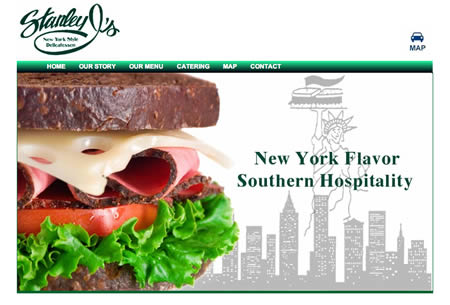Web Design
You have 5 seconds to keep a new visitor on your website. We’re here to make sure your visitors not only stay longer, but also turn into customers.

Why Most Websites Fail
To create a successful website, you first need to understand a few fundamental things about your target audience and your sales strategy: What is your typical visitor looking for? Who is and is not your ideal customer? What is the potential value of each customer, both short and long term?
The answers to these questions and many more will affect the design, content, and structure of your website. Too many times, these questions aren’t asked or the wrong inferences are made from incomplete information or the reliance on assumptions.
Our Website Development Process
While most companies start by talking about the design of your website, we start by talking about how to market your website. We start thinking about messaging, how to build trust, and what the user pathways will be through your website.
If you have an existing website, we first want to find out what does and doesn’t work about it. If you have not already, we setup website tracking software on your website and review the data to come up with improvements to implement on the next version of your website.
We gain an understanding about your sales process and ideal customers so that we can do a better job of communicating your value proposition to your website visitors. It also helps us prioritize content in a way that will help customers decide whether you’re the right company for them.
Your content and pages are organized in a way that makes your website easy to use. “Wireframes”, like a blueprint for your website, are created to put ideas down on paper before heading into the design of the website.
Depending on the message we wish to convey through the design of your website, we will conduct a creative study that will give us a framework for the design of the website. The design of the website will take place in Photoshop by a designer trained in effective interface design techniques. Our designers have undergone hours of training in persuasive design.
We use the latest front-end coding standards while ensuring that our websites are compatible with mobile devices and are search engine-friendly. We’ve been creating a growing number of responsive design websites as mobile integration has become increasingly important to business objectives.
Depending on your needs, we will either customize an off-the-shelf content management system such as WordPress (basic content website) or Magento (e-commerce) or use our in-house, custom-developed CMS, called WebModulite. You will be trained in how to use the CMS.
Our coding undergoes rigorous stress tests including potential exploits, workload balancing, and compatibility.
There will always be elements of your website that can be further tested and improved upon. For example, should you feature your top client logos on your homepage, or instead highlight your client testimonials? Which will do better? We like conducting tests to find out and further improve your website as time goes on. After the website has launched our online marketing team will execute a long term strategy that will bring you qualified customers at a high return on investment.
